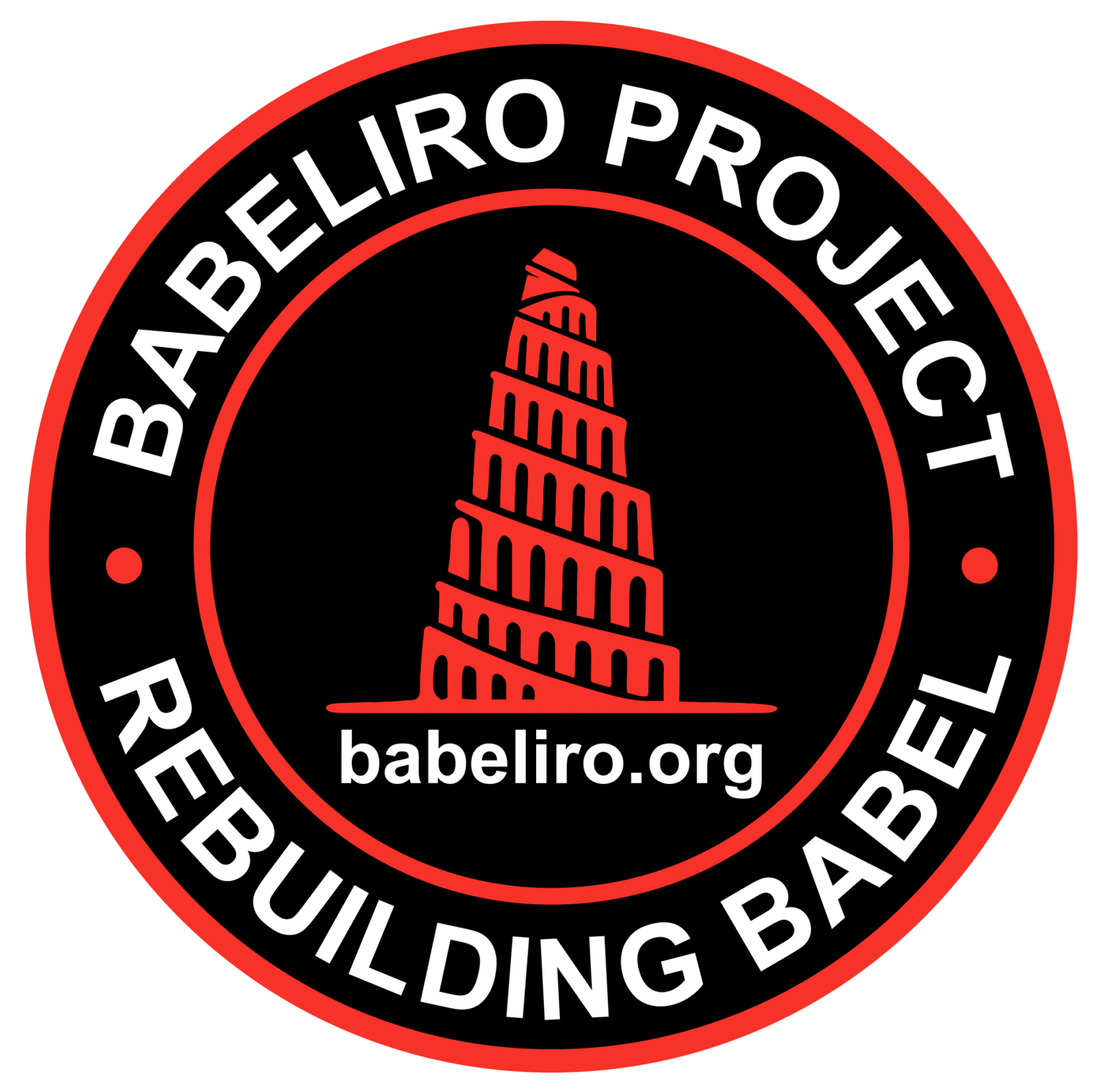Introduction to Babeliro
Babeliro is a constructed logical language designed to facilitate logical thinking and enhance communication. The creation of such a language stems from the ongoing pursuit of clarity and precision in the expression of thoughts and ideas. Traditional languages, while rich in cultural nuance, often lead to ambiguity and misunderstanding in logical discourse. Babeliro addresses these issues by providing a structured syntax and clear semantics, which prioritize logical coherence over linguistic flourishes.
The primary purpose of Babeliro is to simplify the process of reasoning and dialogue among individuals. By utilizing a universal set of symbols and rules, Babeliro aims to reduce the cognitive load associated with interpretation, allowing speakers to focus on the substance of their arguments rather than the intricacies of language. This language provides a common ground for discussions that require a high level of analytical thinking, making it particularly beneficial in fields such as philosophy, mathematics, and computer science.
One notable advantage of Babeliro is its role in bridging communication gaps between speakers of different languages. In an increasingly interconnected world, the ability to express logical concepts without the constraints of a native linguistic framework can foster collaboration and innovation. Additionally, the logical structure of Babeliro minimizes the chances of misinterpretation, thereby promoting better understanding among participants in a dialogue.
Fundamentally, Babeliro is built upon principles of formal logic, incorporating elements from various logical systems to create a comprehensive yet accessible framework. Its development reflects the understanding that language is not merely a tool for communication but also a means of shaping thought. As such, any enhancement in linguistic clarity can lead to improved cognitive processes and the effective sharing of knowledge. The subsequent sections will delve deeper into the specific features and components that define Babeliro, illustrating its potential to transform our approach to logical reasoning and discussion.
The Philosophy Behind Babeliro
The development of Babeliro is deeply rooted in philosophical thought, particularly in the context of how language shapes human cognition and our understanding of the world. Central to this discussion is the linguistic relativity theory, often associated with the Sapir-Whorf hypothesis, which posits that the structure and vocabulary of a language influence its speakers’ cognition and worldview. Babeliro seeks to challenge conventional linguistic constructs by providing a language framework that enhances logical reasoning and clarity in thought.
Babeliro’s design is intentional; it is structured to mirror logical principles and facilitate clearer, more coherent thought processes. The philosophy behind this language asserts that by adopting a more logical linguistic structure, users can elevate their cognitive abilities, improving both their problem-solving skills and their communication. This approach aligns with the belief that the language we use is not merely a tool for communication but also a determinant of our mental frameworks and perceptions of reality.
Furthermore, Babeliro serves as both a language and a philosophical stance, advocating for the importance of clarity in communication and thought. By emphasizing the need for precision in language, Babeliro aims to avert the ambiguities and misinterpretations that often arise in traditional languages. It presents itself not just as a means of interaction but as a system intended to promote rational discourse and enhance the user’s capability for abstract thinking. In this sense, Babeliro embodies a transformative approach to language, encouraging a more logical and structured engagement with the surrounding world.
Ultimately, its purpose transcends mere communication, aiming to foster a deeper understanding and appreciation for the power of language in shaping thought and reality. By intertwining philosophical principles with linguistic design, Babeliro aspires to transform how individuals think and interact with their environment.
The Structure of Babeliro
Babeliro is designed with a unique grammatical structure that distinguishes it from many existing languages. At its core, the language is governed by a set of universal rules that prioritize clarity and logic. This simplification enables speakers to convey complex ideas in an efficient manner, making Babeliro an attractive option for those seeking a straightforward approach to communication. The universality of its rules makes it easier for learners to adapt and use the language effectively.
One of the key features of Babeliro is its “root-word” system. Each word in Babeliro is built around a core concept, represented by a root word. This root word can then be modified through the addition of prefixes and suffixes, creating nuanced meanings without the necessity of convoluted constructions. For example, a root word that denotes “truth” can be transformed into various derivatives that signify different forms of truth, such as “truthfulness” or “truth-seeking.” This efficient morphological process allows speakers to express complex abstract thoughts with minimal effort.
Additionally, Babeliro employs a logical sentence structure that often follows a Subject-Verb-Object (SVO) format, facilitating easy comprehension. The explicit nature of subjects and objects within sentences clarifies relationships between concepts, which is particularly beneficial for complex abstract reasoning. Moreover, modifiers such as adjectives and adverbs are strategically placed to enhance the context without overwhelming the core sentence. This structured approach not only streamlines communication but also reinforces the logical underpinnings of the language.
Ultimately, the grammatical simplicity of Babeliro, through its universal rules and logical structuring, fosters effective communication. This emphasis on clarity and conciseness is crucial, especially when it comes to discussing intricate ideas, making Babeliro a valuable tool for thinkers and communicators alike.
Introducing Babelaro: The Idiom of Babeliro
Babelaro serves as the idiomatic extension of Babeliro, expanding upon its foundational principles by integrating a rich vocabulary that pertains to non-abstract concepts. This development transforms Babeliro from a purely logical framework into a more functional language that can be used across various real-world contexts. By doing so, Babelaro facilitates a more intuitive understanding of complex ideas, effectively bridging the gap between logical expression and everyday communication.
The grammar of Babeliro provides a unique structure, allowing speakers to convey intricate thoughts with clarity and precision. Babelaro enhances this by introducing idiomatic expressions that resonate with the lived experiences of individuals. This approach not only enriches the language but also makes it applicable to diverse fields such as science, philosophy, and art. For instance, the incorporation of idioms related to emotional states or situational context enables speakers to express nuanced perspectives that may otherwise be challenging to articulate within a rigid logical framework.
Moreover, Babelaro promotes a more natural dialogue between speakers, empowering them to communicate their ideas without the constraints typically associated with formal logic. As individuals engage with Babelaro, they find that the idioms not only simplify their thoughts but also enrich their interactions with others. The adaptability of Babelaro’s vocabulary allows for a blend of logical reasoning and emotional expression, fostering a comprehensive comprehension that goes beyond mere factual accuracy.
In essence, Babelaro represents an innovative evolution in the language of Babeliro. It embraces the intricacies of human thought and feeling, enabling speakers to traverse the spectrum from abstract reasoning to concrete understanding. By merging logical grammar with an idiomatic vocabulary, Babelaro becomes a versatile tool for communication, enhancing the overall functionality of Babeliro in various contexts.
Applications of Babeliro and Babelaro
Babeliro, with its structured grammar and simplified vocabulary, serves as a robust international auxiliary language, designed for seamless communication across diverse linguistic backgrounds. Its potential applications are manifold, ranging from diplomatic negotiations to global business transactions. By reducing linguistic barriers, Babeliro enables individuals to engage in meaningful dialogue without the encumbrances typically associated with learning multiple languages. This ease of communication not only bolsters mutual understanding but also fosters collaboration in multinational environments.
In educational contexts, Babeliro and its idiom, Babelaro, can significantly enhance language instruction. As a neutral language, it can be introduced in language classes to teach fundamental linguistic concepts, encouraging students to explore comparative linguistics and the cultural nuances of various languages. Additionally, educators might use Babeliro as a bridge for students who are struggling with traditional language learning, allowing them to grasp essential communication skills in a less intimidating format. This approach could inevitably spark interest in linguistics and promote an appreciation for the intricacies of human language development.
Furthermore, the applications of Babeliro extend into the realm of technology, particularly in human-machine translation systems. As AI advancements evolve, integrating Babeliro into computational linguistics may facilitate more accurate and efficient translations, particularly in environments where rapid understanding is crucial. The simplicity and clarity of Babeliro could serve as a foundational language for algorithms, potentially reducing errors and enhancing the fluidity of exchanges between humans and machines. This presents a practical advantage not solely for businesses but also in everyday applications, allowing for smoother interactions in our increasingly automated world.
With its varied applications, mastering Babeliro offers practical benefits in communication and reasoning, positioning it as a valuable asset in an interconnected global landscape.
The Culture of Babel
The culture of Babel, as created within the imaginative framework of the Babeliro language, fosters a unique confluence of thought, expression, and community. At the heart of this culture lies a meticulously developed calendar that operates on a 13-month system, each month consisting of 28 days. This structure not only simplifies the tracking of time but also resonates with the rhythmic and predictable flow of nature. Each month in the Babeliro calendar is named after an aspect of the natural world, reinforcing the connection between language and the environment.
Integral to the Babel culture is its numerical system, which is designed to be both intuitive and straightforward. This system employs base-10 principles, promoting ease of calculation while encouraging a deeper appreciation for the patterns inherent in mathematics. The emphasis on numerical clarity reflects the logical nature of Babeliro, where each numeral serves not merely as a symbol but as a conduit for complex ideas and relationships. This logical framework empowers speakers to engage with mathematical concepts and problem-solving in a seamless manner.
Storytelling traditions within the Culture of Babel further enrich the linguistic experience. Narratives woven in Babeliro often draw upon the community’s history, emphasizing moral lessons and shared values. These stories utilize figurative language to illustrate philosophical ideas, exploring themes such as unity, diversity, and the human connection to the cosmos. As such, the storytelling aspect acts as a bridge, linking the logical components of Babeliro with the emotional and cultural fabric of its speakers. This interplay enhances not only the language itself but also fosters a sense of belonging and identity within the Babel community.
Learning Babeliro: A Gateway to Logical Thinking
Learning Babeliro offers a unique opportunity for individuals seeking to enhance their cognitive skills through a structured and logical language framework. One of the most significant advantages of Babeliro is its accessibility; it is designed to be learned by speakers from any linguistic background. The grammar of Babeliro is intentionally straightforward, allowing learners to grasp the core concepts quickly. This simplicity promotes an efficient learning process that engages both students and professionals.
Various effective methods exist for mastering Babeliro and its idioms. For instance, learners can benefit from immersive practice, where they engage in conversational exchanges that reinforce their understanding of the language’s structure. Additionally, online resources, including interactive courses and community forums, provide opportunities for collaboration and support among learners. Utilizing gamification techniques can further enhance the learning experience, making it more enjoyable and retaining attention effectively.
As learners progress in their journey to acquire Babeliro, they will discover that the language not only facilitates communication but also encourages clearer thinking. The logical constructs inherent in Babeliro require users to organize their thoughts systematically, fostering disciplined reasoning skills. As a result, individuals often find themselves better equipped to tackle complex problems, a skill that is particularly advantageous for students engaged in higher education or professionals working in analytical fields.
Moreover, learning Babeliro can serve as a tool for self-improvement. Emphasizing clarity and precision in expression can lead to enhanced personal and professional relationships. By facilitating effective articulation of ideas and arguments, Babeliro fosters an environment conducive to constructive dialogue. In this way, learning Babeliro transcends mere language acquisition, becoming an essential component of advanced cognitive development.
The Relationship Between Babeliro and Other Languages
Babeliro presents a fascinating interplay with existing languages, functioning as a logical bridge that enhances comprehension across linguistic barriers. The foundation of Babeliro lies in its capacity to distill complex thoughts into simpler logical structures, aligning with universal patterns found in various languages. This characteristic positions Babeliro as a valuable tool for both native speakers and learners of second languages.
One of the notable aspects of Babeliro is its ability to clarify the logical rules inherent in human communication, which are often obscured by the nuances and irregularities of traditional languages. For instance, while many languages employ intricate grammatical systems, Babeliro applies a streamlined approach that emphasizes clarity and precision. This logical undercurrent can prove especially beneficial for language learners striving to grasp the fundamentals of grammar and syntax. By illustrating grammatical functions in a simplified manner, Babeliro enables learners to make connections between their native tongue and the constructs it introduces.
Furthermore, Babeliro serves as a profound resource in exploring semantic equivalents across languages. By highlighting the similarities in logical constructs, it fosters a deeper appreciation for the linguistic diversity that exists globally. For example, the representation of logical relationships—such as cause and effect—can be seen in both Babeliro and many natural languages. Such parallels enhance understanding and retention of both the logical language and the learner’s native or secondary language, potentially leading to improved communicative competence.
In summary, the unique relationship between Babeliro and other languages epitomizes its role as an illuminating tool in the realm of linguistics. By simplifying thought through logical clarity, it not only enriches the understanding of grammar but also manages to bridge gaps between diverse linguistic backgrounds. This creates a more accessible and cohesive approach to language learning and use.
The Future of Babeliro
The future of Babeliro holds remarkable potential as a logical language designed to simplify thought and communication. With its structured syntax and focus on clarity, ongoing development efforts aim to improve its accessibility and applicability across various domains. An important aspect of this advancement involves engaging with a vibrant community of linguists, programmers, and language enthusiasts who are committed to evolving Babeliro to meet contemporary needs.
Community engagement is essential for Babeliro’s success, as the collaborative effort encourages participation from diverse groups. These interactions can lead to the exploration of new applications, potential integrations with existing technologies, and enhancements that could make Babeliro even more user-friendly. Furthermore, fostering a network of contributors not only generates innovative ideas but also facilitates the sharing of best practices, ensuring that the language can adapt to changing circumstances and user requirements.
Furthermore, the integration of Babeliro into technological platforms can showcase its versatility. From artificial intelligence systems that rely on unambiguous communication to educational tools that help students learn logical structures through this simplified language, the potential applications are vast. The increasing demand for clear and efficient communication in an era characterized by digital transformation presents unique opportunities for Babeliro to find its niche.
In addition to technological advancements, Babeliro’s role in linguistics is intriguing. It prompts discussions about language evolution and the way we conceptualize and express ideas. As scholars continue to investigate its implications on cognitive processes and linguistic theories, Babeliro may significantly contribute to the understanding of how logical structures shape human thought.
Ultimately, the future of Babeliro is intertwined with a growing global interest in enhancing communication. Its development trajectory, aligned with community participation and technological innovation, suggests that it will play a meaningful role in the landscape of language and communication, fostering clearer dialogue among individuals from diverse backgrounds.









